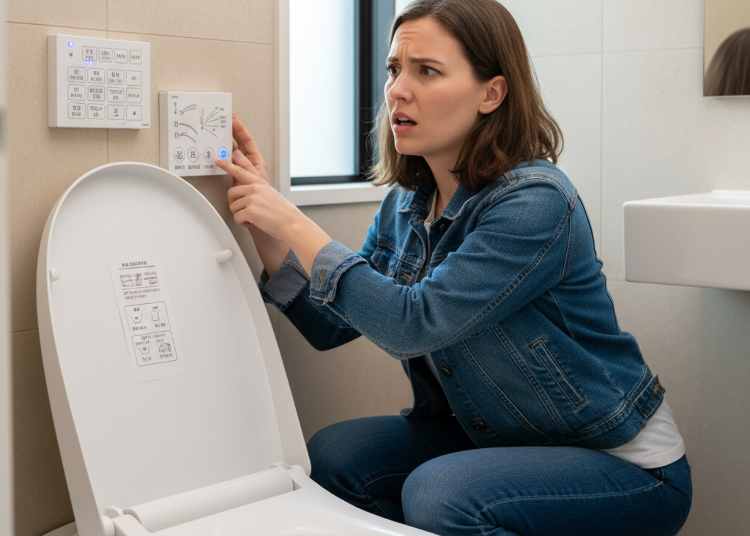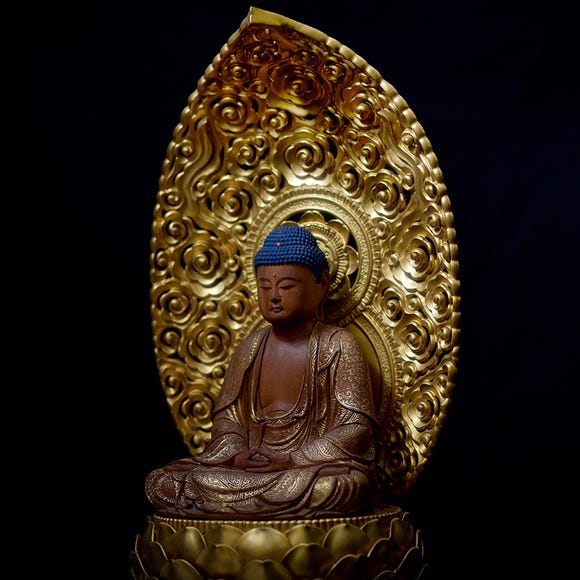
Wait - How Do You Use This Toilet?! Crazy Japanese Bathroom Situations That Shocked Tourists
- Written by: Yuu Sato
Naturally, different countries have different cultures! One of the things related to culture is the “toilet situation.” You may ask, “Isn’t a restroom always the same in every country?” What about it?
We asked Australian men, American men, and Italian women visiting Japan, how they felt as foreigners when it came to Japanese toilets, especially those that they had never seen before coming to Japan. We also asked about the difference from their home country.
(The following reflects the opinion of the interviewees only)
(Main image is AI generated)
I don’t know how to use a Japanese-style toilet

Traditional Japanese-style toilets are becoming less and less common, and even many Japanese people aren’t too familiar with them anymore. You might think they’ve practically disappeared. But according to a 2016 Japan Tourism Agency survey, out of 24,525 toilets at major tourist spots, 10,181—or 42%—were still the so-called “Japanese-style.”
That’s a lot more than you’d expect! So what do travelers think when they first come across one?
“I’d seen squat toilets in China before, so I wasn’t completely shocked when I found one in Japan. Still, it took me by surprise! Honestly, I wouldn’t want to use one for too long—my knees would give out. If I had the choice, I’d go for a Western-style toilet.” (Australian man)
“I’ve never actually used a Japanese-style toilet.” (American man)
“I’ve never used one either, but I’ve never had any problems with bathrooms in Japan.” (Italian woman)
It seems many visitors are stumped at first. If you’ve only ever known Western toilets, it’s hard to imagine how to use a Japanese-style one.
Foreigners often call it a “squat toilet,” which makes sense—it’s all about the position you take and the workout your thighs get, not unlike the squat exercise itself.
The first time I used a warm water jet toilet seat, I was so surprised I jumped!

In Japan, Western-style toilets often come with seats that spray warm water—commonly known as bidet toilets or “washlets.” They’re everywhere here, but did you know they’re still a rarity overseas? I asked a few travelers what things are like back home.
“We don’t have warm water toilet seats in Australia. I’ve never seen one! Maybe people would think it’s too strange...” (Australian man)
“In the U.S., these toilets aren’t common at all. Most people just use regular ones. If you want one with warm water jets, you’d basically have to custom-build it.” (American man)
“At first I was shocked! In Italy we have regular bidets, but no automatic hot water jet toilets like in Japan. They only started appearing a few years ago, and they’re still not very common. But lots of Italians talk about them because the experience is so unusual.” (Italian woman)
Clearly, Japan’s warm-water bidet toilets take many foreigners by surprise. Just press a button, and a gentle spray of warm water cleans you—it sounds simple, but it’s left quite the impression.
For people in Japan, these toilets are so normal you’ll find them not just at home but also in public restrooms. Overseas, though, they’re still a novelty. Many visitors encounter them for the first time here, and the reactions range from hesitant curiosity to outright amazement.
Some travelers admitted they weren’t sure about them at first. But after trying, many said they grew to love them—so much that going without became unthinkable. One Australian man confessed he resisted at first, but once he gave it a try, his opinion completely changed.
Japanese public toilets are as clean as the ones at home!

“Japanese public toilets are really nice and clean. They’re nothing like the ones back in Australia!” (Australian man)
“They’re definitely cleaner than American ones! Though I have to admit, in super-busy places like Shinjuku or Shibuya, it can be a bit different.” (American man)
“Japanese public toilets are so clean, I love them! Some even smell nice, which is amazing. My only complaint? Sometimes there’s no soap, and I really don’t like not being able to wash my hands properly.” (Italian woman)
One of the things that often surprises visitors is just how clean public bathrooms are in Japan. This may have roots in everyday life—children in Japan are taught to clean their schools, including the bathrooms, from a young age. In many other countries, schools and toilets are cleaned by outside staff, so the idea of “cleaning the toilet yourself” isn’t as deeply ingrained.
In customer-facing businesses, the thinking goes even further: restrooms are seen as a reflection of the overall quality of service. That’s why staff clean them several times a day, making sure they stay spotless.
This approach to cleanliness and care is likely one of the key reasons Japanese public restrooms are consistently praised by travelers from around the world.
Are there pay-to-use toilets? What are they like elsewhere?

“In Australia, we have ‘eco toilets’ in national parks. They’re eco-friendly, using a recycling system that turns waste back into soil.” (Australian man)
“In the U.S., toilets are mostly standard. You don’t really see many unique ones.” (American man)
“In Italy, most station bathrooms cost between 70 cents and 1 euro. Even in Rome or Venice, public toilets at tourist spots are pay-to-use. In cafés and bars, you’re expected to order something before using the bathroom. The cheapest thing is usually an espresso—so if you need the toilet, you’d better grab a coffee first!” (Italian woman)
Unlike Japan, where free public restrooms are the norm, many countries still have pay-to-use toilets. The fee usually covers things like toilet paper, soap, water, and hand dryers. In some places, you may even be expected to leave a tip after using a restroom, even if there’s no entry fee.
There are a couple of reasons behind this system. One is funding—charging small fees helps cover the cost of maintaining public facilities. Another is safety: requiring payment can discourage people from misusing or committing crimes in restrooms, since the doors only open once you’ve paid.
Wrapping Up
The Japanese government has been working to increase the number of Western-style toilets, especially in tourist areas. The thinking was that traditional Japanese-style toilets might feel inconvenient—or even stressful—for many foreign travelers, and that in the future they would likely prefer Western-style facilities instead.
Today, Japan’s modern toilets enjoy an excellent reputation among international visitors, and they’ve become one more way for the country to showcase its spirit of hospitality.
*Prices and options mentioned are subject to change.
*Unless stated otherwise, all prices include tax.
Popular Tours & Activitiess
Recommended places for you
-

Kambei Sannomiyahonten
Yakiniku
Kobe, Sannomiya, Kitano
-
Appealing

Rukku and Uohei
Izakaya
Sapporo / Chitose
-
Goods

Yoshida Gennojo-Roho Kyoto Buddhist Altars
Gift Shops
Nijo Castle, Kyoto Imperial Palace
-

Kanzenkoshitsuyakinikutabehodai Gyugyu Paradise Sannomiya
Yakiniku
Kobe, Sannomiya, Kitano
-

ISHIDAYA Hanare
Yakiniku
Kobe, Sannomiya, Kitano
-

Jukuseiniku-to Namamottsuarera Nikubaru Italian Nikutaria Sannomiya
Izakaya
Kobe, Sannomiya, Kitano
-

How to Get Don Quijote's Exclusive 2025-2026 Winter Gift (+Tax-Free Savings)
-
Ad

Complete Guide to Ueno's National Museum of Nature and Science, the Perfect Place to Visit on Rainy Days or With Children
-

Strawberries, Style, and Tokyo’s Coolest Neighborhood: Winter Afternoon Tea in Kichijoji
by: Guest Contributor
-

This Winter, Godzilla Takes Over Haneda Airport
by: Guest Contributor
-

First Japan Cherry Blossom 2026 Forecast Announced! Here's When & Where to See Sakura in Japan
-

Jujutsu Kaisen Takes Over JR East With a Wrapped Shinkansen This Winter
by: Guest Contributor
-

Sightseeing Highlights: Experience the Appeal of Kyoto Geisha Culture
-

Hokkaido Lavender Fields: 6 Best Places in Furano to See Japan's Dreamiest Purple Meadows
by: Nobuka Kawashima
-

'Too Strict!' 7 Things That Shocked a French Tourist When Visiting Japan
-

Shibuya Crossing: Getting the Best View from the Deck at Magnet by Shibuya109!
-

'Japanese People on Trains...' Italian Woman Surprised by Japanese Rules
-

What The Heck Is A 'PET Bottle'? Deciphering the Most Confusing Japanese English Words
- #best sushi japan
- #what to do in odaiba
- #what to bring to japan
- #new years in tokyo
- #best ramen japan
- #what to buy in ameyoko
- #japanese nail trends
- #things to do japan
- #onsen tattoo friendly tokyo
- #daiso
- #best coffee japan
- #best japanese soft drinks
- #best yakiniku japan
- #japanese fashion culture
- #japanese convenience store snacks













